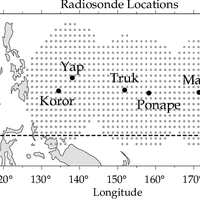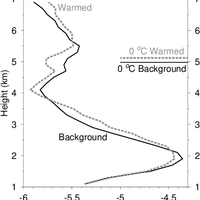Abstract
On short timescales, the effect of deep convection on the tropical atmosphere is to heat the upper troposphere and cool the lower troposphere. This stratiform temperature response to deep convection gives rise to a local maximum in stability near the melting level. We use temperature measurements from five radiosonde stations in the Western Tropical Pacific, from the Stratospheric Processes and their Role in Climate (SPARC) archive, to examine the response of this mid-tropospheric stability maximum to changes in surface temperature. We find that the height of the stability maximum increases when the surface temperature increases, by an amount roughly equal to the upward displacement of the 0 °C melting level. Although this response was determined using monthly mean temperature anomalies from an 10 yr record (1999-2008), we use model results to show that a similar response should also be expected on longer timescales. © Author(s) 2013.
Figures
Register to see more suggestions
Mendeley helps you to discover research relevant for your work.
Cite
CITATION STYLE
Folkins, I. (2013). The melting level stability anomaly in the tropics. Atmospheric Chemistry and Physics, 13(3), 1167–1176. https://doi.org/10.5194/acp-13-1167-2013









